Hygrocybe psittacina
Synonyms
Hygrophorus psittacinus
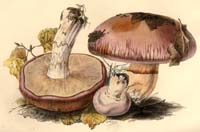 Key to Gilled Mushrooms Key
Key to Gilled Mushrooms KeyThis is a key to gilled mushrooms, that is, mushrooms having a definite cap with a fertile surface consisting of gills. The fruiting body usually also has a stem, although that may be lateral or absent (usually, then, the mushroom is growing from wood). You can use this key to identify mushrooms that you find.
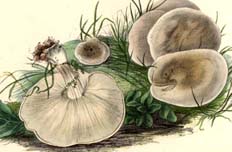 Agaricales Order
Agaricales OrderFruiting body containing fibers (usually in the stalk)
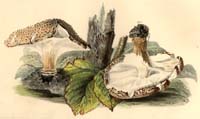 White Spored Suborder
White Spored SuborderSpore print "light-colored": white or buff, sometimes tinged with pink or tan. Greenish and (except for the Russulales) yellow spore prints also go here
Stalk fibrous, not fracturing like a piece of chalk
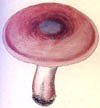 Hygrophoraceae Family
Hygrophoraceae FamilyGills (at least) with a distinct waxy or silky feel, due to unusually long basidia
No annulus, armilla or volva
Cap often slimy
They tend to grow in cold areas, and sometimes fruit at times when it's too cold for other mushrooms
Several have an insulating slimy universal veil. This veil leaves the cap and the stalk slimy, except for the upper stalk where the gills covered it when the mushroom was a button.
 Hygrocybe Genus
Hygrocybe GenusCap up to 2" across, usually less than 1" across; almost always slimy; often brightly colored
Often in moss
Stem often fragile and hollow
 Other Colored Hygrocybe Section
Other Colored Hygrocybe SectionFruiting body with no orange, red, or yellow coloration (pink, whitish and buff ones go here)
Hygrocybe psittacina
Here are the characters that distinguish this species from the others in its group. For its more general characters, see higher up on the page.
If there's just a few words or a microscopic feature here, a more thorough description can be found above.
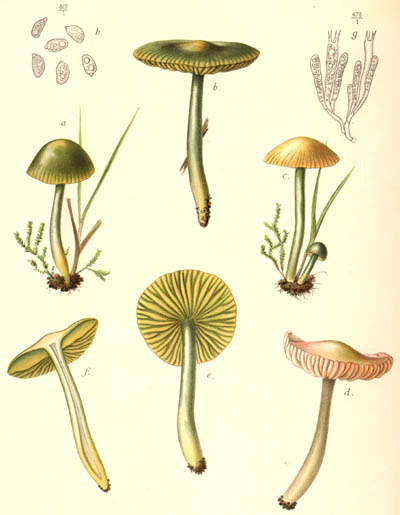
Diagnosis
Microscropic Characters
Comments
Boudier (1904 - 1909) (where the picture comes from) seems to have felt that the stem of this mushroom got lighter at the base. None of my other books mention such a feature, however, and I can't see the base of the stalk in any of their pictures!
Clearly, further research is needed..

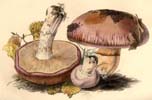


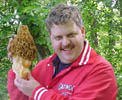

 Key to Gilled Mushrooms Key
Key to Gilled Mushrooms Key Agaricales Order
Agaricales Order White Spored Suborder
White Spored Suborder Hygrophoraceae Family
Hygrophoraceae Family Hygrocybe Genus
Hygrocybe Genus Other Colored Hygrocybe Section
Other Colored Hygrocybe Section





